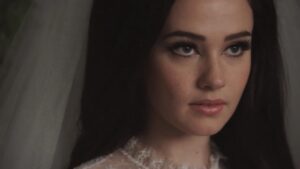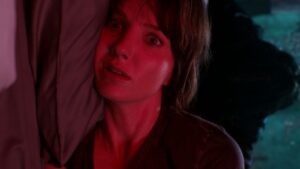Adapting a Stephen King novel is never an easy task. Most directors have struggled with walking a fine line between creative liberty and adherence to the source material. When filmmakers work hard to create a movie that will please both King fans and the general public, it can go a long way, as evidenced by Stand By Me (1986), The Shawshank Redemption (1994), and The Green Mile (1999). As last month’s disappointing Dark Tower adaptation demonstrated, however, film adaptations of King’s novels often fail to satisfy. Additionally, director Andrés Muschietti was taking on a novel King himself has admitted is his masterpiece; saying It had large shoes to fill would be an understatement. Doing justice to the complex plot and themes of the source material, Muschietti delivered, creating a film that lives up to its expectations and presents an experience that both the King fanatic and the regular viewer will enjoy.
The film focuses on the Losers’ Club, a band of kids whose terrifying encounters with a child-murdering creature simply referred to as “It” in the summer of 1989 sends them down a revelatory path. The kids are forced to confront their deepest fears, identify the monster, and figure out a way to stop it before it wreaks more havoc on their small town of Derry, Maine. Stuttering Bill Denbrough (Jaeden Lieberher) acts as the de facto leader of the group as he and his friends Richie Tozier, (hilariously played by Finn Wolfhard of Stranger Things), Eddie Kaspbrak (Jack Dylan Grazer), and Stanley Uris (Wylatt Oleff) pursue the monster.
Bill and his friends are investigating the Barrens, a wooded part of town that connects the sewer system to the local river, when they encounter the new kid in town Ben Hanscom (Jeremy Ray Taylor) escaping local bullies. Later on, the friends meet the rebellious Beverly Marsh (Sophia Lillis) and a farm boy named Mike Hanlon (Chosen Jacobs), who have also been ostracized by the other kids in town. Slowly but surely, each member of the group reveals their encounters with It, and they come to learn that the creature lives in the sewers and emerges to satisfy its bloodlust every 27 years. The film focuses not only on their attempt to kill the monster, but also on the relationships between each of the seven protagonists. The movie functions as a bildungsroman and a love story all neatly fitted into one feature length horror film.
One of the movie’s greatest strengths is the performances from its child actors. Knowing that he was dealing with a film that at its core is about childhood, Muschietti chose well. The most notable of the bunch is that of Wolfhard, whose performance as the loudmouthed wisecracker helps provide levity and humor to the film.
The announcement that Bill Skarsgard, a young Swedish actor with limited experience, would play Pennywise was met with doubt. Bad feelings only increased when the character’s costume design was released online, with critics comparing the costume to something out of Shakespearian England rather than 20th century Maine. Despite these doubts, Skarsgard delivers a great performance that is profoundly disturbing and memorable. This creepiness distinguishes Skarsgard’s performance from that of Tim Curry’s, who played It in the 1990 television miniseries. Curry’s performance was extravagant, with the monster serving both as the source of scares and of constant comic relief. However, Skarsgard’s It relies on subtle humor, which can be lost on viewers during fast-paced horror scenes with jump scares and gore.
The production crew breathes life into the pages of the novel, creating sets that embody the terror and small-town feel of Derry. Whether it be an abandoned house or Ben Hanscom’s history-laden room, each set contains surreal yet believable elements and allusions to the source material. The most awe-inspiring of these is the abandoned house on Neibolt Street, the place where the Losers’ discover It lives. The house appears lopsided, its paint faded and surrounded by bare, scraggly trees and dead grass. A rusty tricycle is noticeable on the lawn, and it all evokes a general sense of unease.
The movie drifts between scenes of horror and gore, heartwarming friendships, and hilarious one liners. Where this film at moments falters is the transition between these tones, which at times can feel too rushed, preventing the emotion of the scene from properly sinking in. To Muschietti’s credit, focusing on only one tone would have failed to encapsulate what made the novel special. With a runtime of two hours and 15 minutes, there’s just no way to feasibly make these tone shifts feel as natural as they do in the 1100 page novel. However, Muschietti’s retelling of King’s classic is an enchanting story of growing up, lost innocence, and overcoming inner demons.
What makes It such an enjoyable experience is its heart. The movie demonstrates the power of friendship, the joys and pains of childhood, and the way we deal with grief and abuse. The adults of Derry manipulate and fail to understand their children. In particular, scenes with Eddie’s mom and Beverly’s dad suggest that the monster that plagues the town is more metaphorical than literal. While the monster feeds off of the people of Derry, Derry also embodies the monster, and each of its residents have parts of It inside them. The movie’s heart and sense of humor distinguishes it from other horror films in recent memory. It blends the two wonderfully, and despite feeling choppy at times, effectively recounts a heartwarming tale of growing up in the face of tremendous adversity.





